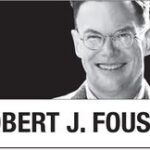
Are you struggling to shed those stubborn pounds despite eating less and hitting the gym regularly? You’re not alone—countless individuals face this same frustrating situation despite their best efforts.
When most people embark on a weight-loss journey, they typically cut back on their food intake and start exercising. But here’s the kicker: despite all this effort, the scale often fails to reflect the hard work, even as they endure hunger pangs and push themselves at the gym.
So, what’s the real issue here? Jeong Joo Ho, a renowned first-generation trainer and CEO of Startrain, has a surprising answer: it’s all about your “personal benchmark.”
In a recent appearance on the YouTube channel Knowledge Inside, Jeong recalled a male client who struggled to lose weight despite reducing his food intake. The twist? This client had previously been consuming three bowls of rice per meal! When he decided to “diet,” he cut down to two bowls. Sure, he ate less than before—but still significantly more than an average portion. No wonder his weight remained unchanged!
Jeong explains that this phenomenon works both ways: “You’ll hear people say they’re eating more but not gaining weight,” he says. “They think they’ve increased their portions, but in reality, they still consume less than the average person.”
When it comes to exercise, Jeong drops another truth bomb: if you’re not pushing yourself to the limits, you won’t see the desired results.
“Using only 50% of your strength during a workout? That won’t cut it for muscle growth,” he warns. To truly see progress, you need to ramp it up to at least 70% intensity.

The key to successful weight management? First, understand your unique dietary habits and set a realistic benchmark.
Jeong’s final piece of advice is to get real about your eating habits. It’s not just about eating “well” or “poorly”—you must be a food detective. Track what you’re eating, how much, and when. Only then can you set realistic goals and make meaningful changes to your diet.















Most Commented